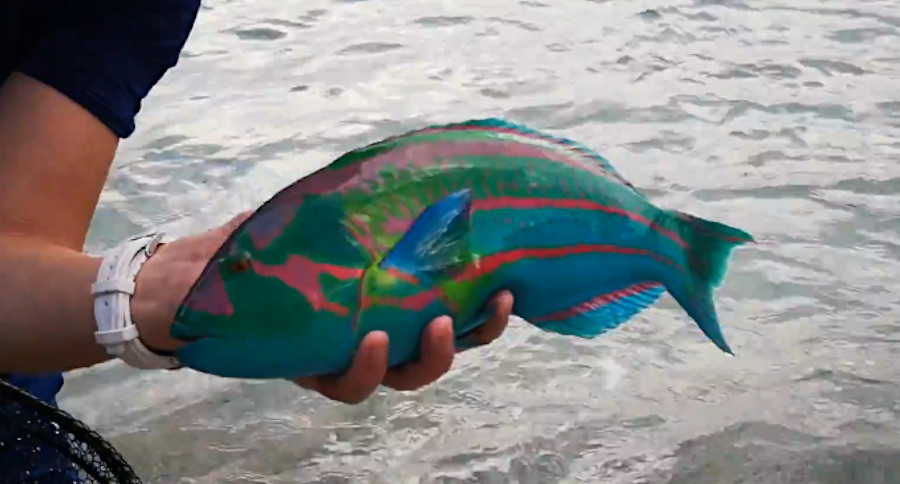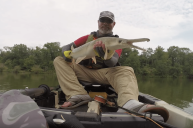The Surge Wrasse is one colorful fish!
There are plenty of colorful saltwater game fish swimming around in the oceans of the world. The mahi mahi, sailfish, red snapper and yellowfin tuna come to mind.
But one of the most colorful fish in the ocean doesn't grow much larger than two pounds.
It's called the surge wrasse. Never heard of it? We're not surprised.
It's a bit of an obscure fish, which is a shame because it's absolutely beautiful. Here is more about this strange fish and how you can catch one.
A whole family of colorful fish
The surge wrasse, scientific name Thalassoma purpureum, isn't super-well known by anglers. But aquarium enthusiasts love them. The fish makes for a colorful addition to just about any saltwater fish tank.
The range for this fish is a bit limited. It's mostly found in the Southeast Atlantic Ocean along the coast of Africa and the Indian and Pacific Oceans.
They can also be found on coral reefs in the middle east in the Red Sea, along the Australia's coasts and in the Coral Sea. Some are even found in the Hawaiian islands, parts of Japan and Christmas and Easter Islands.
If you're from the United States, prepare to do some traveling to find one.
The name wrasse refers to a rather large family of saltwater fish and almost all of them are quite colorful, especially the yellow and purple wrasse. But the surge wrasse may be the most colorful and intriguing-looking one of them all.
Young wrasse, also known as the "initial phase," aren't anything special to look at. But as they grow to full-size adults, also known as the "terminal phase," they have a gorgeous blue or green, pink, orange and purple color pattern. It literally looks like this fish came off some beautiful alien world!
The snout of these fish is interesting as well. They have large-looking lips and jaws that protract outwards to snag their prey, which mostly consists of invertebrates and small fishes. The surge wrasse lives mostly in shallow, rocky coastlines common in areas like the Indo-Pacific. This is a shallow water reef fish. You'll rarely find them in waters deeper than 30 feet.
As far as I can tell, no official records for surge wrasse have been recorded by the IGFA. But these fish don't grow very large, only around 15-18 inches and a max weight of around three to five pounds.
Fishing for surge wrasse
Despite their beautiful coloration, you don't hear much about fishing for surge wrasse. They're much more popular in the aquarium trade. Maybe that's because of their size. Maybe it's because other species are more plentiful.
I haven't eaten one myself, so I have only the words of others on the Internet to go on, but opinions on them on the dinner plate seem quite divided. Some say wrasse in general are too bony and flaky, and others say they make for excellent table fare. I guess learning what they taste like is part of the adventure of seeking them out!
Fortunately, fishing for surge wrasse is quite simple. A variety of soft plastics and small live baits resembling the small critters they eat should catch them. We recommend asking around the local fishing hangout spots and tackle stores at your chosen fishing location to find out for sure.
Because they don't grow very large, you also don't need super expensive or heavy gear to seek them out. Light spinning or baitcasting gear should work fine. They do have some teeth, so you may want to consider a braided line.
It seems the majority of surge wrasse are caught by fly fishermen. The wrasse generally aren't picky and will take a variety of flies around reef margins and outer reef flats. By all accounts, they are plenty aggressive and provide a decent fight for a fish of that size on fly tackle.
But more than that, a picture or a replica of your memorable catch will make for a great conversation piece, because this fish is a total head-turner that will have everyone asking questions.
For more outdoor content from Travis Smola, be sure to follow him on Twitter and check out his Geocaching and General Outdoor Youtube Channels.
NEXT: HOW TO MATCH YOURSELF WITH THE PERFECT INTERNATIONAL FISHING TRIP
WATCH




